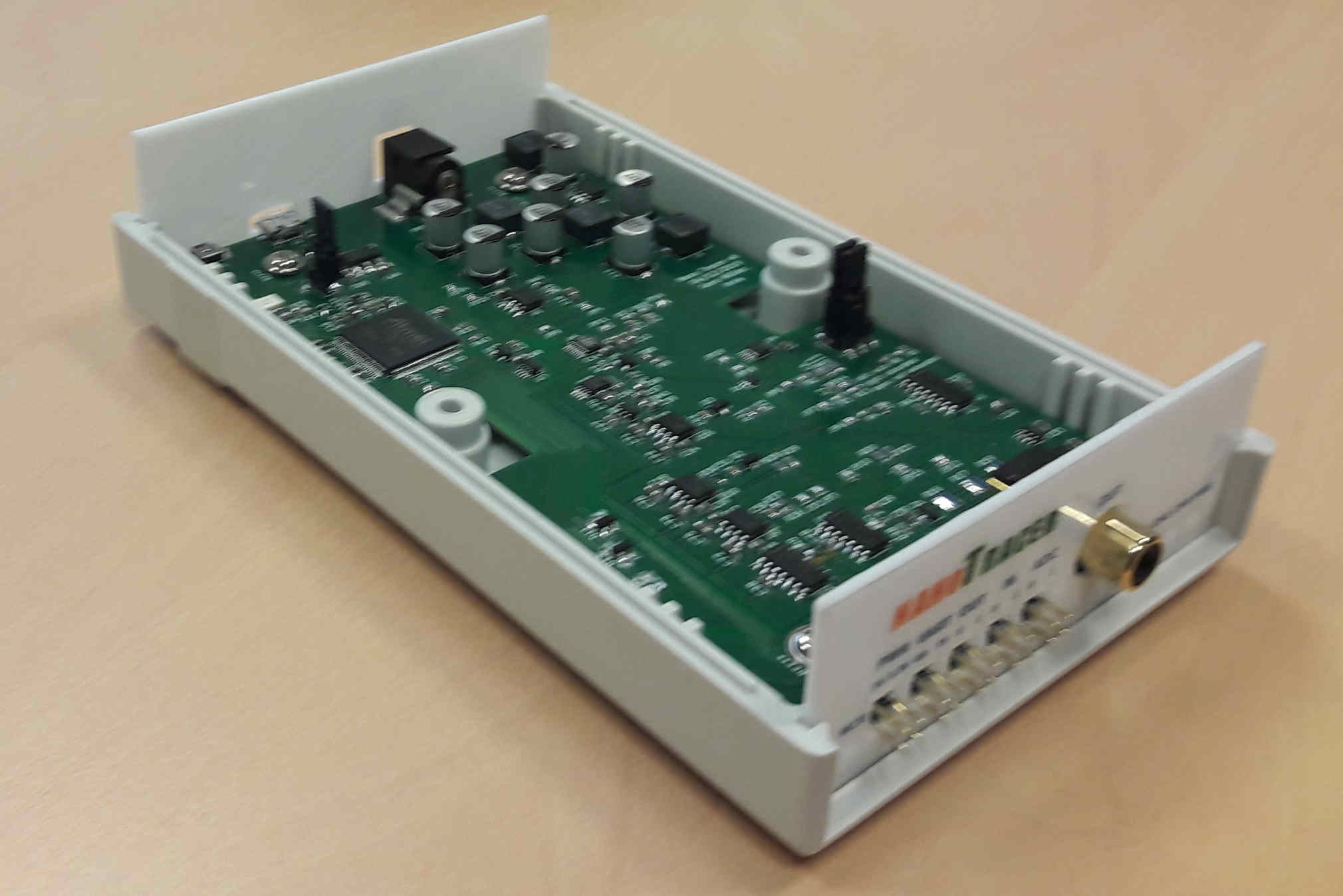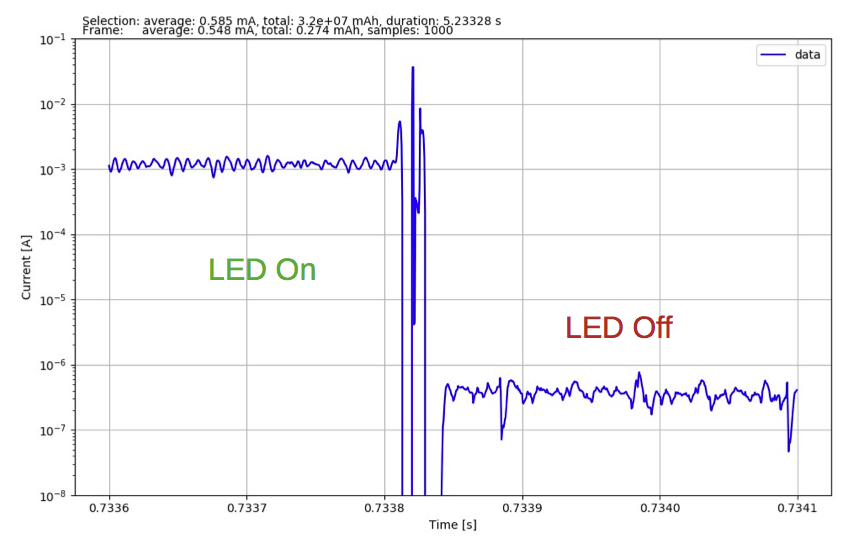Section: New Results
Software Radio Programming Model
Transiently powered systems and Non-Volatile Memory
Socrate is studying the new NVRAM (Non-Volatile Radom Access Memory) technology and its use in ultra-low power context. Non-Volatile memory has been extisting for a while (Nand Flash for instance) but was not sufficiently fast to be used as main memory. Many emerging technologies are forseen for Non-Volatile RAM to replace current RAM [32].
Socrate has started a work on the applicability of NVRAM for transiently powered systems, i.e. systems which may undergo power outage at any time. This study resulted in the Sytare software published in IEEE Transaction on Computer [3] and is also studied in an Inria Project Lab ZEP (https://project.inria.fr/iplzep/teams/).
The Sytare software introduces a checkpointing system that takes into account peripherals (ADC, leds, timer, radio communication, etc.) present on all embedded systems. Checkpointing is the natural solution to power outage: regularly save the state of the system in NVRAM so as to restore it when power is on again. However, no work on checkpointing took into account the restoration of the states of peripherals, Sytare provides this possibility.
Another acheivement in this domain is the PhD of Tristan Delizy that concerns memory heterogeneity that results from new NVM technologies. While emerging memory technologies may offer power reduction and high integration density, they come with major drawbacks such as high latency or limited endurance. As a result, system designers tend to juxtapose several memory technologies on the same chip. We aim to provide the embedded application programmer with a transparent software mechanism to leverage this memory heterogeneity. The work of Tristan Delizy studies the interaction between dynamic memory allocation and memory heterogeneity. He provides cycle accurate simulation of embedded platforms with various memory technologies and shows that different dynamic allocation strategies have a major impact on performance. He demonstrates that interesting performance gains can be achieved even for a low fraction of memory using low latency technology, but only with a clever placement strategy between memory banks. This work will soon be proposed to publication.
Sytare integration in Riot
The ADT SytaRiot has been granted to provide transient power management in the Riot operating system [27]. This integration was realized by Gero muller, here is a summary of the technical tasks and correponding pull request on Riot GitHub:
Port RIOT to MSP430+FRAM micro-controllers
-
Bring-up the chip against the newer msp430-elf compiler and integrate the toolchain into the RIOT CI infrastructure, cf https://github.com/RIOT-OS/riotdocker/pull/67 , https://github.com/RIOT-OS/riotdocker/pull/82 , https://github.com/RIOT-OS/riotdocker/pull/91
-
Implement initial support for the MSP430FR59xx in RIOT, including device drivers for key on-chip peripherals (UART, Timers, GPIO, etc). cf https://github.com/RIOT-OS/RIOT/pull/11012
-
Implement a board support package for the MSP-EXP430FR5969 Launchpad Development Kit and the Boost-IR daughter-board (Infrared transceiver + keypad), cf https://github.com/geromueller/RIOT/commit/f13d33
-
Participate in IETF hackathon 104 (Prague, March 23–29, 2019) to work on SUIT IoT Firmware Update, cf https://trac.ietf.org/trac/ietf/meeting/wiki/104hackathon
Explicit checkpointing in RIOT
-
Implement the required low-level code (e.g. DMA driver) for saving/restoring the state of the application to FRAM. cf https://github.com/geromueller/RIOT/commits/checkpoint
-
Implement save/restore methods in all relevant device drivers (DMA, GPIO, UART, Timers) and design an API to expose checkpointing as a general system service in RIOT. cf https://github.com/geromueller/RIOT/commit/8b301e
-
Participate in the RIOT Summit (Helsinki, September 5–6, 2019) to give a talk about checkpointing and power measurement. cf https://summit.riot-os.org/2019/blog/speakers/gero-muller/ Power measurement
A high-performance ammeter for embedded systems
|
In embedded low power processing, precise power consumption is a key issue. The Socrate team realized that existing tools could not fullfill the requirements needed for harvesting devices monitoring (measuring from nano-Amperes to milli-Ampere current values at a high sampling rate and continuously).
With the skills of Gero Müller hired on the SytaRiot ADT, the socrate team designed and built a high performance ammeter dedicated to power measurements for small devices. Our prototype measures currents between 100nA and 100mA (gain is audo-adjusted dynamically) with a sampling frequency of 2Msps. Data is streamed to a PC over USB which enables long-running experiments, or just real-time visualization of data (cf screenshot in Fig. 4).
The device, named nanoTracer, is referenced in the software section, it is an open project on gitlab (https://gitlab.inria.fr/nanotracer/). A first version is currently tested at Inria (Alexandre Abadie from the IoT SED team) and should soon be available for free for Inria and Academic researcher. We are working on solutions to provide a commercial circuit if requests come from other actors.
Ultra-low latency audio on FPGA
Recently the Socrate team started a collaboration with the researchers of the GRAME group. GRAME is a “Centre National de Création Musicale” (CNCM) organized in three departments: music production, transmission/mediation, and computer music research. Four GRAME researchers have expertise in computer science (compilation), audio DSP, digital lutherie, and human-computer interaction in general. GRAME has been leading the development of the Faust (Faust is a domain specific language for real-time audio signal processing primarily developed at GRAME-CNCM and by a worldwide community. Faust is based on a compiler “translating” DSP specifications written in Faust into a wide range of lower-level languages (e.g., C, C++, Rust, Java, WASM, LLVM bitcode, etc.). Thanks to its “architecture” system, generated DSP objects can be embedded into template programs (wrappers) used to turn a Faust program into a specific ready-to-use object (e.g., standalone, plug-in, smartphone app, webpage, etc.).) programming language since its creation in 2004. The GRAME researchers have been associated to CITI as external members in September 2019.
Socrate and GRAME have started a collaboration through the Syfala (synthèse audio faible latence) project funded by the Fédération Informatique de Lyon. The goal of Syfala is to design an FPGA-based platform for multichannel ultra-low-latency audio Digital Signal Processing (DSP), programmable at high-level with Faust and using Socrate's software FloPoCo (http://flopoco.gforge.inria.fr). This platform is intended to be usable for various applications ranging from sound synthesis and processing to active sound control and artificial sound field/room acoustics.
Two internships have been working on this project. A first result was a presentation by Florent de Dinechin and Tanguy Risset, introducing the use of HLS and FPGA for audio, at the second Programmable Audio Workshop (https://faust.grame.fr/paw/) organized by GRAME.
Evaluation of the posit number system
The posit number system is a very elegant way to represent real numbers in a computers. Its proponents promote it as a better replacement for floating-point arithmetic: posits do indeed improve the application-level accuracy of some applications. However, this also comes with accuracy regressions in other cases. Socrate members, along with members of the AriC project-team, first studied some numerical aspects of posits [18]. Socrate then performed a thorough evaluation of the implementation of the main posit operators, improving the state of the art in hardware posit in the process. Posit operators were then compared to IEEE 754-compliant floating-point operators, and were found to be about twice as slow and twice as expensive [20], [15].
Evaluation of the Unum number system
CEA researcher, in collaboration with Socrate members, designed a complete accelerator for the UNUM number system, including hardware [8] and compiler support [11]. A novelty of this work is the use of a variable-length, self-describing, and memory-oriented floating-point number format [23].
General computer arithmetic
The 10th anniversary of the FloPoCo open-source arithmetic core generator project was the occasion to reflect on the evolutions of the field in a special session about arithmetic generator challenges organized at the ARITH conference [16].
A marked evolution over this period has been the deployment of very good High-Level Synthesis tools, thanks to which hardware is described using a software programming language (usually C++). This comes with many new arithmetic optimization opportunities, some of which have been reviewed in collaboration with Steven Derrien, from Inria Cairn [25]
An issue was the lack in this context of a portable, unified, and hardware-oriented library of arbitrary precision integers. In collaboration with David Thomas from Imperial College, London, we worked on such a library, and demonstrated that it enables a safe description of complex small-grain architectures (such as floating-point or posit operators) with a performance matching traditional hardware description languages [9].
Meanwhile, we keep studying the most basic operators. There has always existed two main methods of implementing mulitplication by a constant in hardware: Table-Based, and Shift-And-Add. This deserved a qualitative and quantitative comparison [17]. This work (with Martin Kumm, from Fulda Technical University, and Silviu Filip, from Inria Cairn) also includes a refined ILP-based algorithm for the problem of multiplying a fixed-point input number by a real constant.



